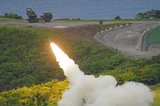SEA, Arke unveil new procurement approach
SEA and Arke have developed a new procurement approach designed to help military decision-makers define and deliver projects at reduced risk, SEA announced on 24 July.
The rapid advance in future soldier technology, from exoskeletons to weapons, helmets, torso protection and night vision systems, is placing additional pressure on choosing the right procurement route.
In order to ensure decision makers can effectively assess whether the technology they are being offered is what is needed, provides value for money and can be delivered successfully within budget, SEA and Arke have devised a method of 'achievability' analysis which helps to establish exploitation barriers and therefore reduce programme delivery risk.
The approach integrates architectural, cost and benefits analyses with an assessment of achievability. In turn, this enables the early identification of issues relating to dependencies, constraints, cultural problems, industrial behaviour and capability management.
The approach links battlefield missions to use cases in both training and operational activities. These activities can then be examined from a strategic, economic, financial, commercial and management perspective to determine the investment case. The outcome is an effective achievability assessment based on comprehensive modelling and simulation to deliver robust and grounded evidence to support decision makers.
SEA principal consultant Darren Stinchcombe, said: 'The approach provides an agenda for programme risk reduction, allows realistic planning for capability exploitation and can be used to support the agile acquisition of capability. The approach is aligned to HM Treasury’s ‘5 Case’ approach, enabling project teams to develop business cases that can withstand robust scrutiny.
'Using this assessment of achievability model identifies and manages ‘real’ programme risk from the outset, provides insights to ensure budgets are invested in deliverable capability, and helps to deliver optimised capability for least cost.'
More from Defence Notes
-
![Taiwan approved for purchase of $11 billion in weapons from US]()
Taiwan approved for purchase of $11 billion in weapons from US
The US State Department’s approval of a multi-billion-dollar sale of weapons to Taiwan includes tactical mission networks equipment, uncrewed aerial systems, artillery rocket systems and self-propelled howitzers as well as anti-tank guided missiles.
-
![US National Security Strategy prioritises advanced military capabilities and national industry]()
US National Security Strategy prioritises advanced military capabilities and national industry
The 2025 NSS has emphasised investment in the US nuclear and air defence inventory and national industry, but it leaves multiple unanswered questions on how the White House will implement this approach.
-
![Canada set to look away from its neighbour and across the Atlantic for partners]()
Canada set to look away from its neighbour and across the Atlantic for partners
While non-EU UK struggles to join the Security Action for Europe initiative, which provides loans for defence programmes, Canada has become the first country outside Europe to get access – and did so for a nominal fee.
-
![NATO experiments with solutions to integrate networks, AI and uncrewed systems]()
NATO experiments with solutions to integrate networks, AI and uncrewed systems
During the latest edition of the NATO DiBaX, the alliance tested multiple capabilities to inform requirements for future efforts.
























